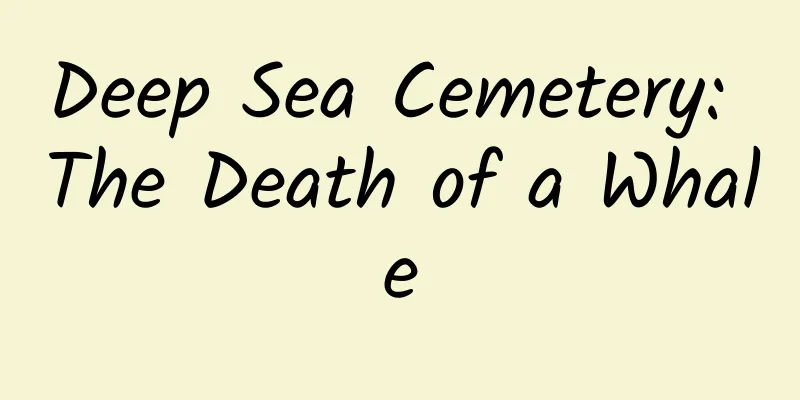Deep Sea Cemetery: The Death of a Whale

|
At the northern tip of New Zealand's South Island, there is a long sandy beach called Farwell Spit. The area is famous because it is the beach where whales have stranded. In 2015, more than 200 whales were stranded in the area, which was the highest number of whale strandings in nearly a decade, according to local conservation teams. Rescuers spent hours trying to get the whale back into the sea. But due to their huge size, half of the whales eventually died on the beach. Without the buoyancy of water, the muscles in their bodies were crushed by their own huge weight. By all accounts, the whale appeared to have beached itself in a suicidal attempt. This is also a mystery that has existed since ancient times. More than 2,000 years ago, the Greek philosopher Aristotle asked the question: Why do whales become stranded on the coast? With the discovery of the first whale skeleton at a desert site in Chile, researchers have found large amounts of iron oxides in the bones. In the ocean, these iron oxides can contaminate algae and produce toxins. We all know that there is a food chain in nature. When whales ingest contaminated algae or swallow prey containing algae, large amounts of toxins accumulate in their bodies. Once the whales become too poisoned to sustain the movement of their huge bodies, the tides carry their bodies toward the shore. In this case, the whale is actually close to death. In fact, harmful algae blooms are a leading cause of whale strandings Since stranding is not the way whales choose to die, where are their cemeteries? The answer may lie in the deep sea. In 1977, a U.S. Navy submarine accidentally discovered a body. It was so big! So huge! Later, marine biologists confirmed that it was the body of a whale. The dead body of a whale has a strange name: it's called whale fall. When the largest mammal in the world stops swinging its body, its heart stops beating, and its eyelids slowly close, the whale fall officially begins, like a grand deep-sea party. When a whale dies in the ocean, its massive body slowly sinks to the bottom of the ocean. The carcass falls to the bottom of the deep ocean, where it will first be devoured by large predators such as sharks and lampreys. The average weight of a whale is around 40 tons, 90% of which is soft tissue. Large predators can eat about 60 kilograms of soft tissue every day. But even at this rate, it would still take a long time for a whale to turn into a pile of bones. When the whale has been almost eaten, the large predators will leave satisfied, and then new creatures will arrive, starting the second stage of whale fall. Dozens of small creatures such as crustaceans and worms began to move into the whale's carcass, targeting the oil-rich content of the whale's bones. A single whale carcass can support an entire colony of small invertebrates, such as crabs, worms, anemones, and sea cucumbers, which can live on the whale skeleton for three to four years. The final stage of whale fall evolution came when these invertebrates could no longer obtain nutrients from whale bones. The gathering of deep-sea creatures reached its climax at this time. The protagonist this time is anaerobic bacteria. They work their way into the whalebone, breaking down the little remaining oils and fats inside, and also dealing with sulfides left behind by previous guests. But they are not in a hurry, they have plenty of time. Whale bones store lipids in the form of a mineral matrix in their massive skeletons, and it takes decades for these lipids to be completely broken down by bacteria. According to statistics, more than 60,000 whales still die naturally every year, and most of them sink into the deep sea, becoming "graveyards" in the deep sea. These whale falls provide the "soil" for the survival of marine biodiversity. In fact, before whales evolved, there was already another creature that had been playing the role of "soil". It’s just that now nature chooses whales. Whale fall is an end for whales, but a beginning for other marine creatures. They make their homes on whale falls, where a small ecosystem is created that operates in the dark deep sea for decades or even hundreds of years. |
<<: What is the ethylene oxide contamination in Haagen-Dazs?
>>: Is all “black metal” really black?
Recommend
Three of them exploded. I really don’t recommend buying this kind of toy for children!
Balloons are many children’s favorite toys. Go to...
Will the signal of iPhone 12, the lightest and thinnest 5G mobile phone, be good?
"Today, we bring 5G to iPhone. This is an ep...
3 tips for event planning and promotion!
After reading thousands of cases, why don’t you k...
Mobile QQ 8.2.8 update: Image text extraction is easier
[[316739]] Today, Tencent QQ Android and iPhone m...
Sohu account, Baijia account, which platform is the most suitable for self-media people?
Self-media has become a common model for personal...
Is there a "sea" in the vast Gobi Desert? It is an "energy supply station" for migratory birds!
In Fuhai County in Altay Prefecture in northern X...
Summary of 2020 college entrance examination scores in various regions (full text)
Summary of the 2020 college entrance examination ...
Do you know the 8 ways to place Tik Tok ads?
Here are 8 ways for brands to use Douyin. Brands ...
Douyin Operation: With tens of millions of followers, how did “Canteen Night Talk” conquer Douyin users?
The popularity of the Douyin short video account ...
Is Apple's programming language Swift easy to learn?
For Apple developers, we have entered the "Sw...
Scary! In just two hours, the microplastics we eat can enter our brain!
Plastic fragments with a diameter of less than 5 ...
When will the Qingdao epidemic end in 2022? When will it be unblocked? Attached the latest news
Recently, the first city in Shandong Province to ...
7 essential skills for operators: Data analysis ability is the watershed of future operations
The era of traffic-centric, barbaric operations h...
Tik Tok marketing and promotion, 6 steps to make money with Tik Tok account!
Now many brand companies have realized the huge m...
The truth behind the new Macbook Pro's battery life is revealed: The conclusion is speechless
Not long ago, Apple began to urgently recruit eng...









